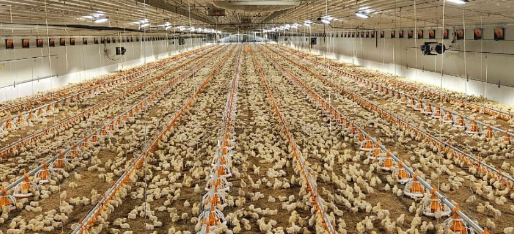Retech farming can provide you with detailed information on the installation and maintenance of tunnel ventilation systems. Proper installation and regular maintenance of tunnel ventilation systems are essential for their efficient operation, as this will ensure a suitable environment in the chicken house, thereby improving the health and productivity of the chickens.
The following are the steps to install a tunnel ventilation system:
1. Planning and design
- Choose a site: Choose a place with no obstacles, large space and easy access to water and electricity for installation.
- Design the system: Ask a professional company or engineer to design, including the number and location of fans, and the size and location of vents.
2. Prepare the required materials
- Fans: High-speed exhaust fans are required, which are usually installed at one end of the chicken house.
- Air inlet (vent): This part is usually installed at the other end of the chicken house and is equipped with wet curtains or evaporative cooling pads.
- Control system: A system that can automatically control temperature, humidity and wind speed is required.
3. Installation steps
- Install the fan: Install a powerful fan at one end of the chicken house, and ensure that the fan position is even for the best exhaust effect.
- Install the air inlet: Install the air inlet at the other end of the chicken house and make sure it is equipped with a wet curtain or cooling pad, which can provide a cooling effect on the incoming air.
- Laying of pipes and wires: Lay the pipes for the ventilation system and connect the wires to ensure that the control system can communicate accurately with the fans and cooling pads.
- Install the control system: Install and debug the temperature, humidity and wind speed control system to achieve automatic regulation.
Maintenance points of tunnel ventilation system
1. Regular inspection and cleaning
- Fan maintenance: Check the fan weekly and remove dust and debris from the fan blades to ensure normal operation.
- Air inlet and wet curtain: Clean the air inlet and wet curtain regularly to prevent dust and algae from accumulating and affecting the ventilation effect.
2. System calibration
- Control system: Regularly check and calibrate the control system to ensure the accuracy of the temperature, humidity and wind speed sensors.
- Alarm system: Test the alarm system to ensure that it can issue an alarm in time when the temperature or humidity exceeds the standard.
3. Poultry equipment maintenance
- Motor and bearing lubrication: Regularly lubricate the fan motor and bearings to reduce wear and extend the service life of the equipment.
- Replace worn parts: Replace severely worn parts such as fan blades, belts or wet curtains in a timely manner to ensure stable system performance.
4. Monitoring and recording
- Environmental parameter recording: Record the temperature, humidity and air quality parameters in the chicken house and adjust the ventilation system settings at any time.
- Daily inspections: Conduct inspections every day to ensure the normal operation of equipment such as fans, control systems and wet curtains.
Implementation cases and sharing experiences
Case studies: During the installation and maintenance process, you can refer to the cases of chicken houses in the Philippines that have successfully implemented tunnel ventilation systems to learn best practices and experiences.
Cooperation and training: We have a professional installation team based in the Philippines who can assist you or train your technicians so that they can operate and maintain the system proficiently.
Through precise installation of the system and an effective maintenance plan, the tunnel ventilation system can maintain optimal operating conditions and provide a stable and suitable environment for your chicken house, thereby significantly improving the health and production efficiency of the chickens.
Post time: Jun-04-2024













